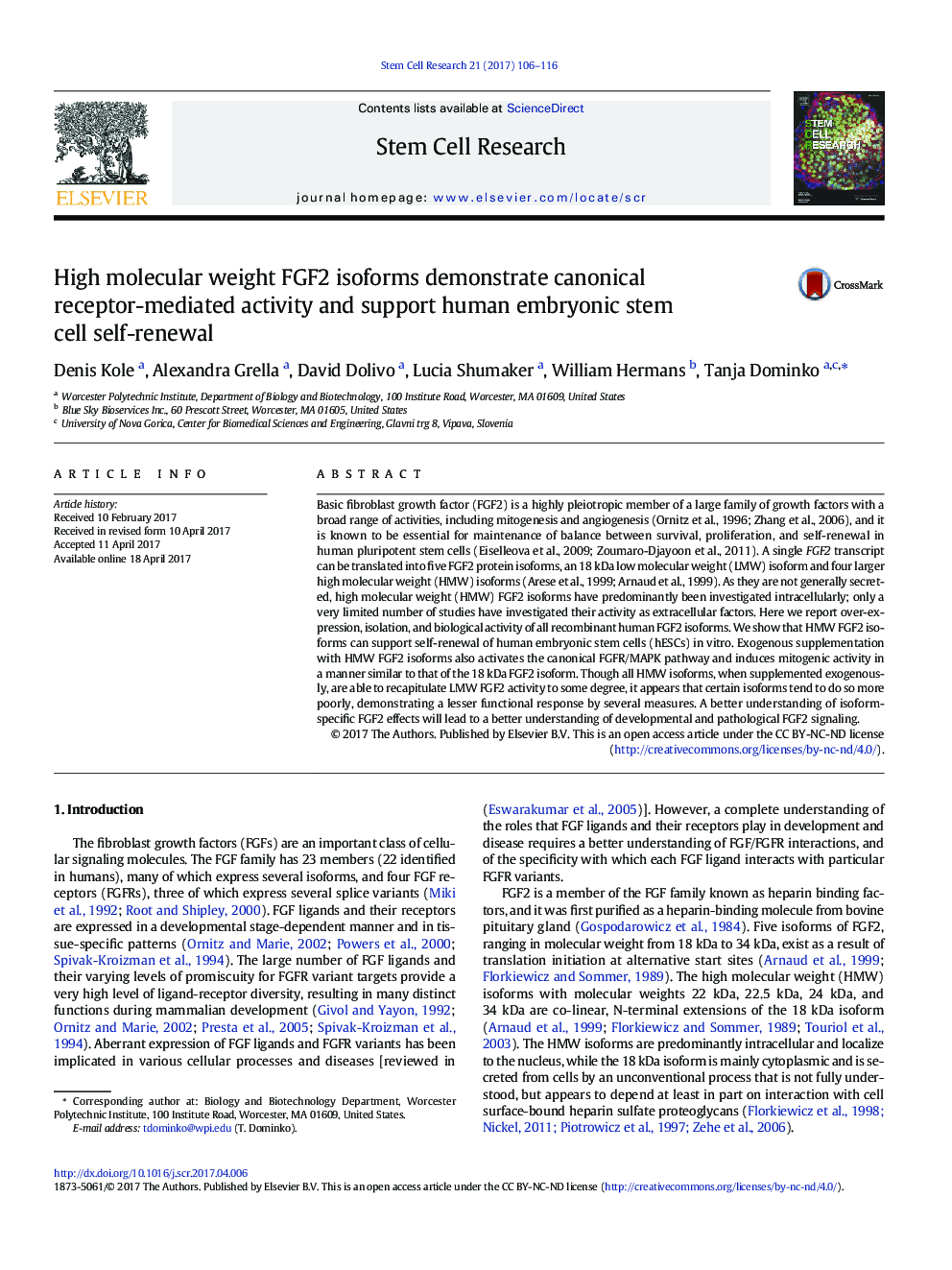| Article ID | Journal | Published Year | Pages | File Type |
|---|---|---|---|---|
| 5522654 | Stem Cell Research | 2017 | 11 Pages |
â¢All 5 FGF2 isoforms were individually expressed and purified.â¢Addition to culture media of high molecular weight FGF2 maintains FGF2 phenotypes.â¢All FGF2 isoforms activate FGFR1 IIIb, activate ERK, and induce proliferation.â¢All FGF2 isoforms maintain the ability of embryonic stem cells to self-renew.â¢Different FGF2 isoforms display differential abilities to mediate specific effects.
Basic fibroblast growth factor (FGF2) is a highly pleiotropic member of a large family of growth factors with a broad range of activities, including mitogenesis and angiogenesis (Ornitz et al., 1996; Zhang et al., 2006), and it is known to be essential for maintenance of balance between survival, proliferation, and self-renewal in human pluripotent stem cells (Eiselleova et al., 2009; Zoumaro-Djayoon et al., 2011). A single FGF2 transcript can be translated into five FGF2 protein isoforms, an 18Â kDa low molecular weight (LMW) isoform and four larger high molecular weight (HMW) isoforms (Arese et al., 1999; Arnaud et al., 1999). As they are not generally secreted, high molecular weight (HMW) FGF2 isoforms have predominantly been investigated intracellularly; only a very limited number of studies have investigated their activity as extracellular factors. Here we report over-expression, isolation, and biological activity of all recombinant human FGF2 isoforms. We show that HMW FGF2 isoforms can support self-renewal of human embryonic stem cells (hESCs) in vitro. Exogenous supplementation with HMW FGF2 isoforms also activates the canonical FGFR/MAPK pathway and induces mitogenic activity in a manner similar to that of the 18Â kDa FGF2 isoform. Though all HMW isoforms, when supplemented exogenously, are able to recapitulate LMW FGF2 activity to some degree, it appears that certain isoforms tend to do so more poorly, demonstrating a lesser functional response by several measures. A better understanding of isoform-specific FGF2 effects will lead to a better understanding of developmental and pathological FGF2 signaling.
